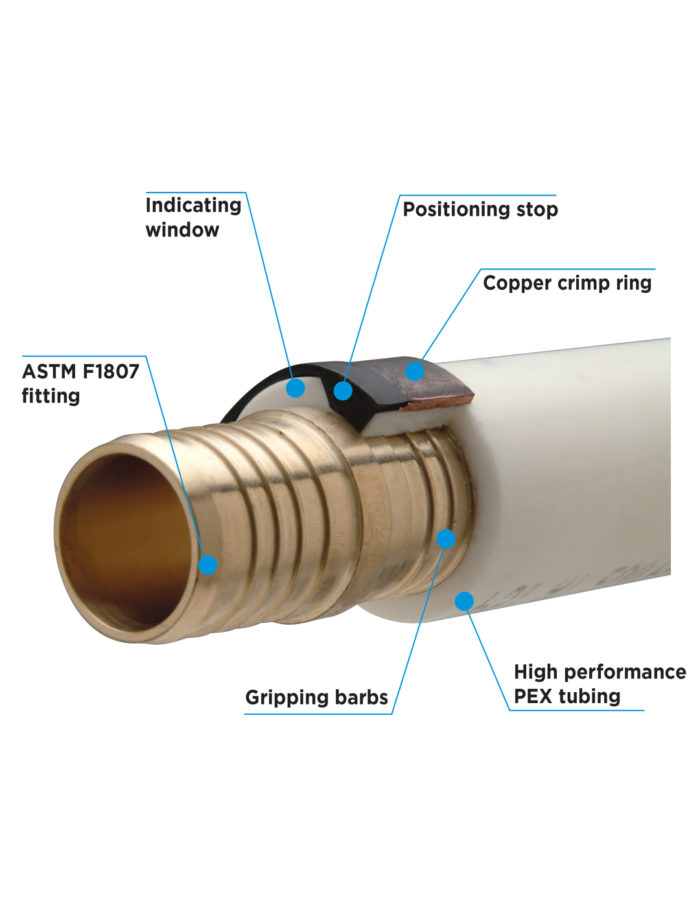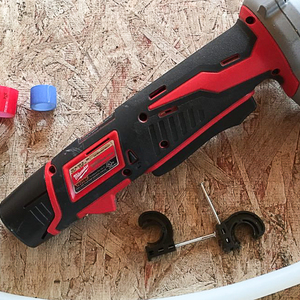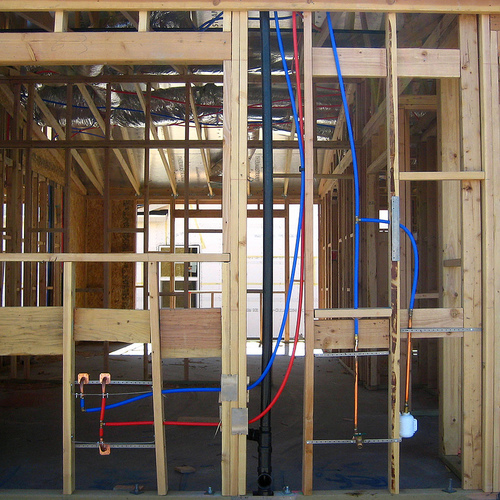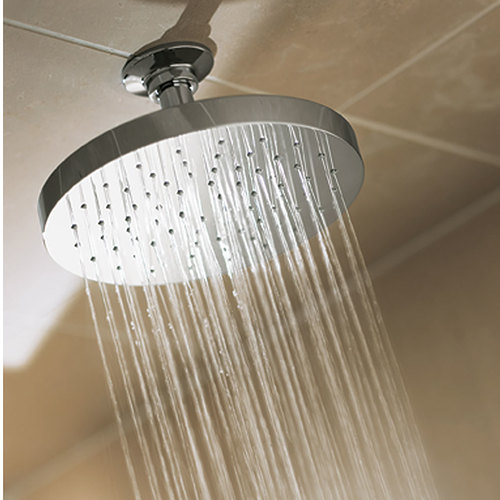
Image Credit: Image #1: Zurn Industries
Building his “forever house,” Dean Sandbo is mulling what type of tubing to use for his plumbing supply lines. He has narrowed the choice to one of two types of cross-linked polyethylene (PEX): PEX-A or PEX-B.
Key issues, Sandbo notes in his Q&A post at GBA, are how long the tubing will last, and whether there are safety concerns — that is, will the PEX tubing leach chemicals into his drinking water?
“I am on a well,” he writes. “Any input as to the longevity and safety of these two different types of pipes?”
Although that’s where the discussion starts, GBA readers quickly turn to another potential issue: What’s the best way of achieving a leak-free connection between tubing and fittings?
That’s the topic for this Q&A Spotlight.
Characteristics vary by type
There are actually three types of PEX, as a reference article supplied by GBA senior editor Martin Holladay explains (see the “Related articles” sidebar below). Types A, B, and C are manufactured differently, which affects characteristics such as flexibility, resistance to chlorine and oxidation, coil memory, and cost. The lettered designations aren’t grades, just references to the manufacturing process.
For Richard McGrath, PEX-A is at the top of the heap. “PEX-A is produced with a better manufacturing process than PEX-B as the crosslinking takes place during the extrusion process,” McGrath writes. “PEX-A products usually achieve an 85% crosslinking while PEX-B products average a 65-70%.”
PEX-A is more resistant to the chemicals commonly found in plumbing and heating systems than what it has replaced, he adds, and long-term testing by Uponor, one of the manufacturers of PEX-A, is very encouraging. The company holds an unofficial record for resisting high temperature and pressure, McGrath says, holding up to 175 pounds per…
Weekly Newsletter
Get building science and energy efficiency advice, plus special offers, in your inbox.

This article is only available to GBA Prime Members
Sign up for a free trial and get instant access to this article as well as GBA’s complete library of premium articles and construction details.
Start Free TrialAlready a member? Log in















12 Comments
polypropylene
Polypropylene is great as far as taste and is also one of the better plastics as far as environmental impact of manufacturing. The downside is that, as far as I know, there's no way to do any work on it without a special heat welding system. Few plumbers in the US have those systems. I hope that will change, but for now I'd be hesitant to install that system unless there are at least two plumbers in your area who have good reputations and have the tools to work on it.
Thanks for pointing out the Legend Hyperpure alternative. It would be interesting to see some third-party reporting about it.
What about push-to-connect
I had a plumber work on my system recently, and he used Sharkbite push-to-connect fittings to change around some of the pex lines. Any concerns about the reliability of these pieces?
PP
The heat welding systems for PP aren't terribly expensive for residential pipe sizes (<2"), around $1k if I recall correctly. You can easily drop $2-3K on battery powered expanders / crimpers for Pex.
The real downside (other than cost) is that it requires some additional planning for fittings and connections, and can't be used in a small diameter home-run system like pex can. So if you don't like waiting for hot water, you're back to a circulation loop.
I REALLY don't trust sharkbite fittings. They're expensive, and the seal there relies entirely on a rubber washer that is likely to wear out much quicker than the PEX, and if we're already worried about the PEX longevity...Particularly w/ chlorinated water, I don't let them in the houses I work on.
Uponor fittings are not
Uponor fittings are not "unrestricted" or "full flow". Not even very close, either. A quick look at the specs will confirm this. They're just *less* restricted than typical PEX fittings.
Inner diameters for 1/2 nominal products:
Uponor PEX tubing: 0.475"
Uponor fitting: 0.378"
Standard PEX fitting: 0.350"
Sources: http://www.uponorpro.com/~/media/Extranet/Files/plumbing%20literature/AquaPEXProPEX_Compare_C274_0211.aspx?sc_lang=en
http://s3.supplyhouse.com/manuals/1295550221872/44591_PROD_FILE.pdf
You can also see it clearly if you have physical access -- the fittings are clearly smaller on the inside than the tubing.
Reply to Steve
The main downside of Sharkbite fittings is their price. Most of the builders I know are comfortable using them in locations where they are exposed but are still reticent to bury them in walls. There is no reason to doubt their integrity, but a lot of us would rather wait and see what their long term reliability is. Most other fittings that rely on rubber gaskets for their seal are fixtures, like faucets or hose bibs, where the consequences aren't as large if they do fail.
Mixed plumbing?
If chemicals commonly leach from the PEX, why not use polypro for the common sources of drinking water and use PEX for the rest, especially home-run hot water?
Dustin's idea
Dustin, I think that's a great idea.
Mixed plubing
We've looked at that on a couple houses, but in both cases the owner's opted for either full PP or full PEX. The reason is that one of the speculative downsides of PEX is a shorter service life...so if you're paying to do a good chunk of the system in PP (including the line from the street), you might as well go whole hog and get "forever pipe" everywhere.
I could see doing it in a very large house, though.
Mixed plumbing
Chemicals added to a plumbing system (as when you drip chlorinate) are considered to be fully dispersed after 4 diameters of pipe length. Is there any research that suggests that chemicals leaching from pex pipes would stay isolated within what is a common, open water supply?
We know contaminates that enter the pressurized water supply of a house can affect the municipal system it is attached to. If there are chemicals leaching from the pex, they are probably going to similarly end up present in all the house's water.
Thanks, Malcolm.
I won't worry about changing out the Sharkbites then. But after reading this thread, I think I will reinstall my wholehouse water filter.
Uponor fittings
The question remains, which isn't necessarily answered in this article, does one risk using a fitting system other than Uponor, if by doing so you would likely have no warranty coverage. What Richard McGrath lays out seems pretty straight forward. Plumbers use other fittings, WHICH WILL WORK, however, if plumber/consumer want the manufacturer to honor a warranty to claim, they better have used the Uponor fittings.
Seems like a no brainer to use them. Am I wrong?
Response to MS
MS,
If I understand Richard McGrath correctly, he is a big fan of Uponor tubing. That's fine -- lots of people have favorite brands. If you are using Uponor tubing, you need to use Uponor fittings. That's as expected.
If you choose a different brand of tubing -- say, Nibco tubing -- then you use Nibco fittings. Again, no surprise.
Log in or become a member to post a comment.
Sign up Log in